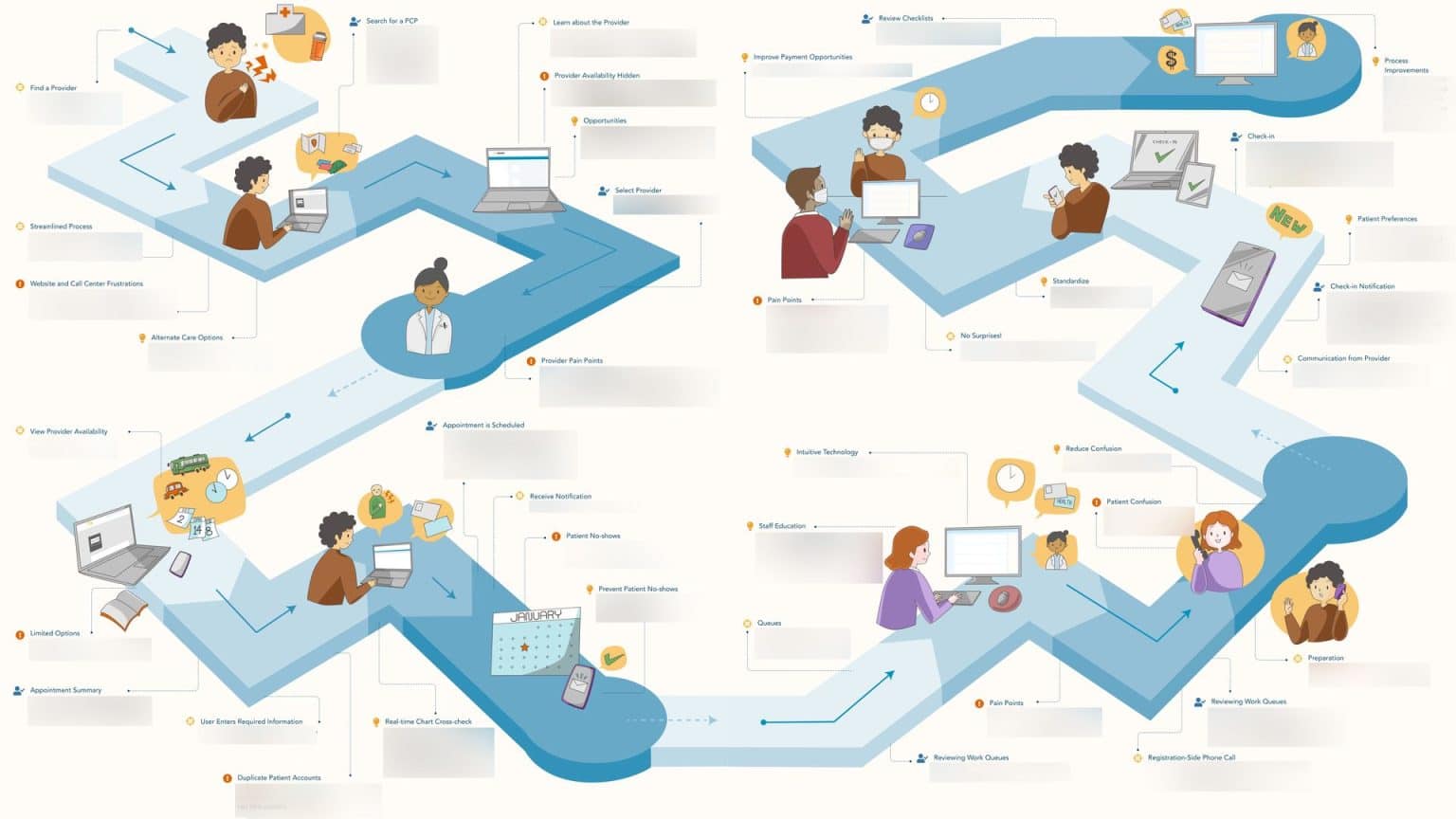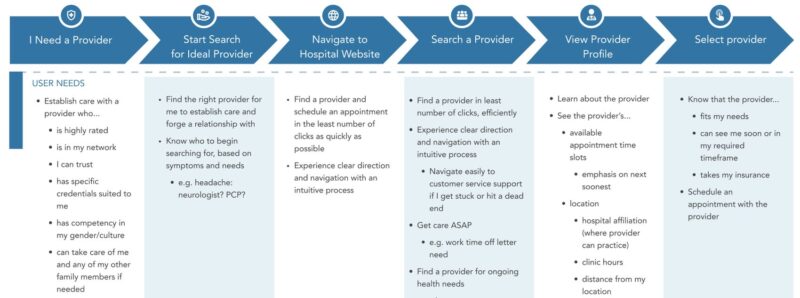User Journey Mapping Increases ROI
According to a Forrester study, for every dollar a company invests in user experience, it sees 100 in return, on average. (Source) This and similar statistics make it easy to see why user journey maps are a powerful tool in software development.
What Is a User Journey Map?
In software development, user journey maps are visual representations of a user’s steps as they experience a digital product. They are like a user flow on steroids in which each step is documented with a high level of detail.
Please note that, while we will be discussing user journey maps specifically for the development of digital products, the same process can be used to evaluate users experience of physical products or services.
What Is the Difference Between a User Journey Map and A Customer Journey Map?
User journey maps are similar to customer journey maps, but they have one very distinct difference. A user journey map documents the actions a user takes as they interact with a particular product or service. They are created with a more targeted goal of making that product more appealing to users. In contrast, customer journey maps offers a comprehensive view of a customer’s interactions with a business, with a goal of improving customer satisfaction and loyalty.
Why Are User Journey Maps Useful in Software Development?
In our lengthy experience, user journey maps provide crucial insights that speed development and improve user satisfaction. For this reason, they are a hallmark deliverable of our Strategy & Design engagements.
The benefits of user journey maps are:
- Uncovering every step of the user’s journey
- Visualizing and understanding the user’s end-to-end experience
- Enabling data-driven decisions
- Facilitating stakeholder alignment and collaboration
- Improving user retention and satisfaction
In our process, user journey maps are developed after crafting user personas and before our user story mapping exercise. It’s important to first understand the user, so you can accurately map out their journey. With this work done, designing the right solutions and features for the users becomes much easier.
Components Of a User Journey Map:
Every user journey map should include the following data points:
1. User Persona
The specific target audience for which you will be evaluating the journey. If you haven’t identified your target audience, we recommend you take time to perform this exercise.
2. Scenario
The scope and timeframe of the journey. Establishing the scope and timeframe of your user’s experience makes it much easier to dial in on specific, near-term, and attainable improvements to add to your backlog.
3. Interactions
Each individual step of a user’s journey. We like to say that a user’s journey starts before they even think of interacting with your software and ends way after logging out. “Steps” should be defined in a way that makes the most sense for your users, but try to provide enough detail for every row in your journey map.
4. Evaluation Criteria
Categories for which you will evaluate each step of the user’s journey. Categories might include:
a. User Goals/Needs
i. What are the user’s goals of this step?
ii. What would they like to accomplish by doing this step?
iii. Why are they taking this action?
iv. What do they expect this step to be like?
b. Process
i. What actions might the user take in order to complete this step?
ii. Are the actions variable depending on the user type, or does every user have to complete the same actions in the same way?
c. Channels/Touchpoints
i. Does the user interact with other pieces of software during the step?
ii. Does the step require face-to-face interaction?
iii. Does this step require a user to call someone for a conversation via a phone?
iv. Can a user complete this step on both the web and a mobile device?
d. Experience
This category can help determine which steps frustrate users most and may need extra consideration when designing.
i. What emotions does the user experience while they complete this step?
ii. Is this a step that the user wishes they didn’t have to do, or is it a step that the user enjoys to do?
e. Problems/Pain Points
i. What blockers may the user run into during this step?
ii. What may users not like about this step?
iii. How might this step negatively affect other steps earlier or later in the journey?
f. Ideas/Opportunities
i. What are ideas for how to eliminate the pain points that were identified for this step?
ii. Is this step needed, or can it be combined with another step in the journey to streamline the overall process?
iii. What features could be added or what could we do differently to improve the user’s experience of this step?
5. Facilitation
Creating user journey maps should be a facilitated exercise with a range of stakeholders. Attendees of user journey mapping sessions should, at a minimum, include SMEs of your product. It can also be helpful to invite secondary stakeholders to get diverse opinions, thoughts, and ideas. To facilitate these sessions, we suggest designating one facilitator who will walk the participants through each cell one at a time, and one notetaker who will document the discussion and findings in detail.
How to Use Your User Journey Map
To prevent your user journey map from becoming a piece of artwork on the wall or useless file on your hard drive, make sure it is ripe with information that can inform future development. We accomplish this by taking the bullet points from the Ideas/Opportunities component and adding them each as a sticky note in a user story map (the next step of our strategy and design process). These are directly translated into product backlog tickets.
Take the time to take the journey WITH your user! Your users will thank you.






